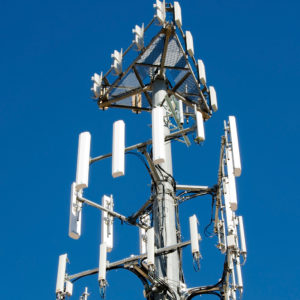In the world of technology and technology policy, experimentation is a must if we hope to uncover new products and services for consumers.
When it comes to the world of wireless spectrum, the FCC is charged with managing this scarce resource and the agency is constantly searching for new ideas to maximize the benefits and value of our limited airwaves. Recently, for example, the FCC updated its rules for a new multi-tiered approach to sharing spectrum at 3.5 GHz.
This so-called “Citizen’s Band Radio Service” is a very novel approach to spectrum management that seeks to create a managed approach to shared spectrum. It holds tremendous opportunity for 5G and I hope it is a roaring success. But it’s never been done before and, as with any fundamentally new policy idea, there is no guarantee that the idea will work. The best-laid plans often go awry, as the saying goes.
As policymakers, sometimes great enthusiasm for a new approach is met with the reality that an idea is too complex or the economics just don’t work. When that happens and the marketplace speaks, regulators need to listen. Take, for example, the FCC’s creation of the “ancillary terrestrial component” (ATC) rules. Having had a front-row seat to this spectrum policy experiment 15 years ago, I know firsthand that not all ideas survive the harsh realities of the marketplace.
The ATC concept was pretty straight forward — to enhance the business model and expand the reach of satellite systems (think urban canyons), in certain spectrum bands. The FCC voted to allow satellite companies to integrate an ancillary terrestrial component into their service. In other words, satellite licensees would be permitted to design a service offering that would combine satellite capabilities with terrestrial wireless service accessed on a single handheld device. Spectrum zoned for satellite service would now be available for terrestrial use as a supplement to the satellite coverage.
It was an innovative approach, with many potential benefits and efficiencies. It also had its detractors who feared that the ATC concept would never work as an integrated service and could lead to attempts by satellite licensees to abandon their underlying satellite services in favor of a dedicated terrestrial wireless product. As I noted in my statement approving the order, “the record in this proceeding demonstrates that the shared usage of these bands by separate Mobile Satellite Services operators and terrestrial operators would likely result in the inability for both systems to operate effectively. This is especially the case for L-band and Big Leo satellite operations.”
So, we required “stringent requirements” that the satellite operator would have to meet to make sure satellite service remained the primary service. As my colleague at the time put it, “Our decision should not allow a Mobile Satellite Services system with an ancillary terrestrial component to evolve into a terrestrial system with an ancillary mobile satellite component.”
Fifteen years later, not a single company has deployed an ATC service as envisioned by the commission. Zero. And the fear that the rules would be gamed to permit primarily terrestrial operations in lieu of satellite service has borne out. Our vision, that satellite companies would integrate terrestrial service into their core satellite business as a supplemental service, has not matched reality.
The marketplace has determined the rules to be unworkable. To be sure, companies have tried to use the spectrum for terrestrial use, but not as an ancillary service. Instead, they have sought waiver after waiver and numerous rule changes to remove the “ancillary” nature of the regime and repurpose the spectrum for terrestrial purposes. Given this reality, the good government response is to reassess the rules.
A leading satellite company, Iridium Communications, recently asked the commission to “end the fiction that ATC is a viable framework and eliminate the ATC rules.” The filing laid out the history of the failed rules and the collateral damage that has resulted in the form of never-ending interference disputes, litigation and bankruptcies.
Notably, they didn’t suggest that the commission shouldn’t look for ways to enable terrestrial use in satellite spectrum bands where it can be done. In fact the commission already did that with one band, eliminating the applicability of ATC rules to the band and making it available for terrestrial use. At the same time, where satellite service is pervasive in a band and a separate terrestrial network appears to be unworkable, like the Big Leo Band that I identified as problematic 15 years ago, then the commission should consider whether to remove the ATC rules.
Regardless of one’s position on the feasibility of terrestrial service in any particular satellite spectrum band, there can be no debate that the FCC’s vision and hopes in 2003 have not worked out the way we hoped. Given this reality it is time to reassess. As the FCC said it would do a few years back, it’s time to revisit the viability of the ATC rules.

